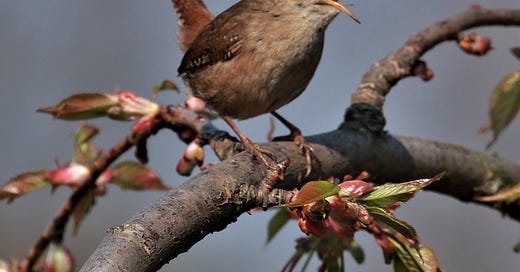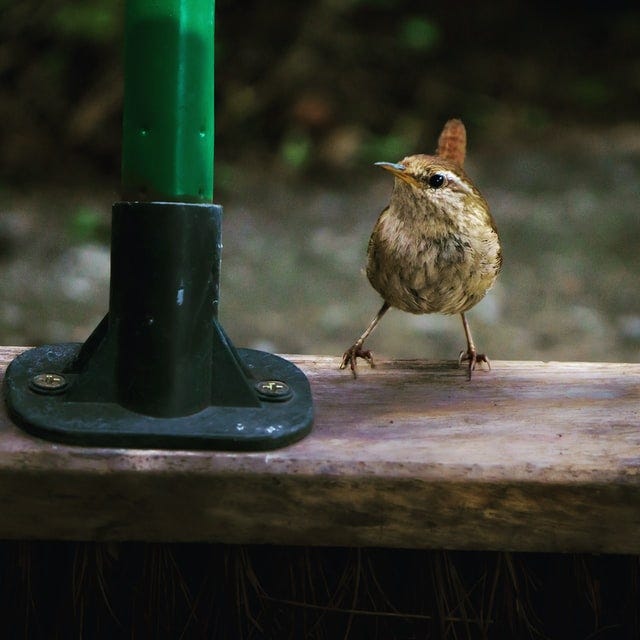If the phrase ‘punching above your weight’ should be applied to any bird it’s the wren. It is one of our smallest and yet loudest residents, and finds a home in almost every habitat in Britain.
The wren’s song is bright and reliable. It can go on blasting out that same phrase with incredible fidelity, hour after hour.
Wrens are ground-huggers for much of the day, and tend to sing from a low position. This might be hidden away in the depths of a bush, or from a low wall or fence.
The strength and regularity of the song, with its penetrating trills, are the clearest giveaways.
It’s an easy one to pick up through repeated exposure, because you can hear it all over the place - most gardens, urban parks, field edges and woodlands have their wrens, but often windswept hillsides, coastal headlands, lakesides and marshes have them too. The scientific name Troglodytes troglodytes (‘cave dweller’) refers to their knack of finding shelter in the stony crevices that most birds avoid.
Another clue is that Wrens seem to lack an off-button. They sing on still winter days, and continuously from early spring, through summer and into autumn.
And when they’re not singing, they’re likely making strong, stony ‘tchk!’ alarm notes, often giving away their presence in nearby cover.
Listen to the wren’s alarm call at xeno-canto
At times these notes cascade into an intolerant trill (about ten seconds into the recording).
Among all bird calls, this noise from the wren may be the single most helpful clue to the presence of nearby trouble. The trigger is often a cat or a person (perhaps it’s you), but it could be a fox, stoat or something else in the undergrowth that might otherwise pass you by.
BONUS FACT: While you rarely see more than one or two wrens at once, in harsh weather they will huddle together for warmth in the same roost. The most remarkable account concerns over 60 birds piling into a nestbox in Norfolk one winter’s evening. I can’t help but wonder whether there was a hole in the back of the box and they were pulling the biscuit factory trick like the mice in Bagpuss.
There’s a new Shriek of the Week every Friday. If you know someone who might like a dose of birdsong in their inbox this year, please pass this along.
You can listen to more sounds via the Birdsong Academy website, where there are also details of the British Birdsong 101 course that begins in February.
Photo by Amee Fairbank-Brown on Unsplash



